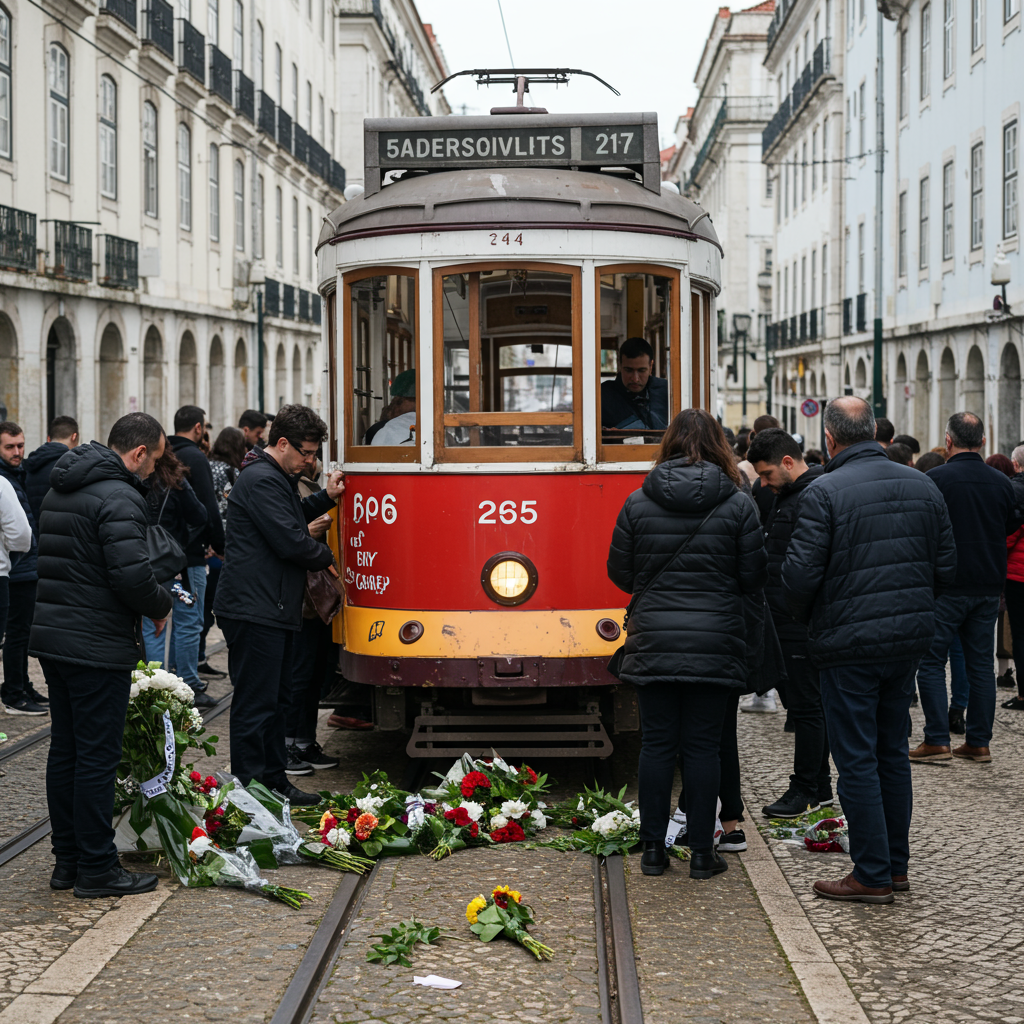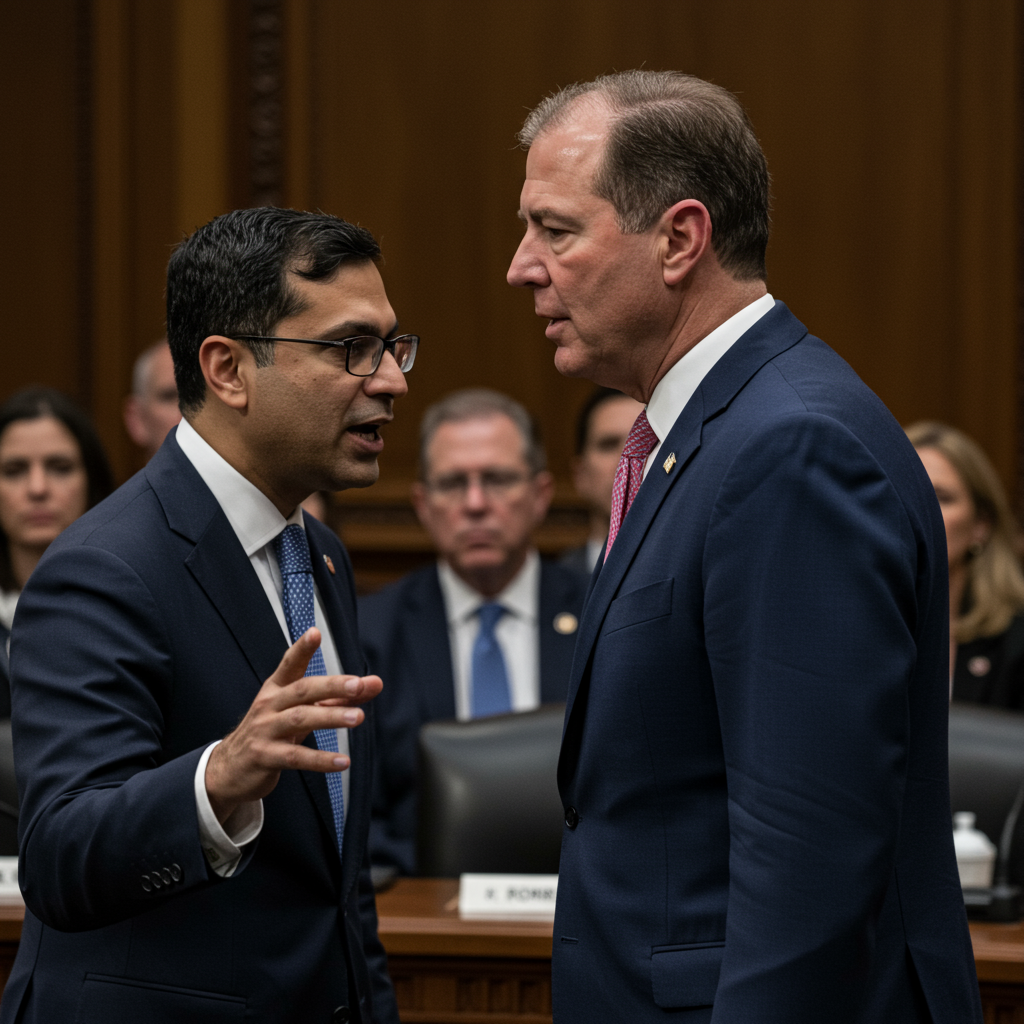Lisbon, Portugal, grapples with an unprecedented tragedy. A historic streetcar derailment has plunged the capital into deep mourning. The death toll from the devastating Wednesday crash of the “Elevador da Gloria” has tragically risen to 17 adults. This disaster, described as the city’s worst in recent history, left an additional 21 people injured. Portugal immediately observed a somber national day of mourning on Thursday, September 4, 2025. The incident has sent shockwaves across the nation and the international community. It raises urgent questions about the safety of Lisbon’s beloved historic transportation system.
Lisbon’s Worst Disaster: The Elevador da Gloria Tragedy Unfolds
The catastrophic Lisbon streetcar crash occurred around 6 p.m. local time. It was the start of the evening rush hour. The “Elevador da Gloria,” a renowned yellow-and-white electric funicular, derailed with brutal force. It then collided with a building along its curved, traffic-free route. Witness Teresa d’Avó described the terrifying scene to Portuguese television SIC. She saw the streetcar “out of control and seeming to have no brakes.” It hit the structure with “brutal force” and “fell apart like a cardboard box.”
Emergency teams responded swiftly. They arrived within three minutes of the 6:01 p.m. alert. All victims were courageously pulled from the wreckage in just over two hours. The crumpled remains of the funicular lay on the downtown road. Police cordoned off the area. Detectives meticulously photographed the rails and the vehicle. This grim scene underscored the severity of the Lisbon funicular tragedy. The incident highlights the vulnerability of the city’s iconic tourist infrastructure.
A Nation United in Grief and Shock
The human toll of the Lisbon streetcar crash is immense. Margarida Castro Martins, head of Lisbon’s Civil Protection Agency, confirmed the 17 fatalities were all adults. She did not immediately release their names or nationalities. Families were to be informed first. Among the confirmed dead was André Marques, the streetcar’s brakeman, as identified by the transport workers’ trade union SITRA.
The injured included a diverse group of nationalities. Two Germans, two Spaniards, and one person each from France, Italy, Switzerland, Canada, Morocco, South Korea, and Cape Verde were among them. A 3-year-old child was also critically injured. This multinational impact underscored the Elevador da Gloria’s global appeal to tourists. Lisbon typically hosts around 8.5 million visitors annually.
Portugal’s President Marcelo Rebelo de Sousa offered his deep condolences. He canceled a planned trip to a book festival. Lisbon Mayor Carlos Moedas called it “a tragedy of the like we’ve never seen.” He confirmed the city was in mourning. The Portuguese government’s statement emphasized the “irreparable loss of human life.” It left families “in mourning and dismayed the whole country.” European Union flags flew at half-staff in Brussels. Numerous EU leaders expressed their solidarity.
Intense Scrutiny: The Ongoing Investigation
Multiple entities have launched investigations into the Lisbon streetcar crash. Portugal’s judicial police force, the attorney-general’s office, public prosecutors, and government transport experts are all involved. Detectives are meticulously examining the wreckage. They are also assessing the steel cables beneath the rails. The government’s Office for Air and Rail Accident Investigations completed its initial analysis. A preliminary report is expected shortly. Chief police investigators anticipate a preliminary police report within 45 days.
Officials have, for now, declined to speculate on the precise cause. Potential theories like a faulty brake or a snapped cable have been mentioned. However, Mayor Moedas stressed the city’s need for “answers.” He dismissed current theories as “mere speculation.” He has requested an independent investigation by an external body. This move aims to ensure transparency and accountability. Carris, the company operating the streetcar, has also initiated its own internal investigation.
Conflicting Reports on Maintenance and Safety Protocols
The question of maintenance is central to the ongoing inquiry. Carris CEO Pedro de Brito Bogas stated the Elevador da Gloria underwent a full maintenance program last year. This historic funicular has been in service since 1914. He also claimed a daily 30-minute visual inspection was conducted. The last inspection allegedly occurred just nine hours before the derailment. However, he did not provide specifics on the visual inspection’s scope or confirm if all cables were tested.
These claims face challenge. Manuel Leal, head of the Federation of Transport and Communications Workers’ Unions (Fectrans), contradicted Carris. He stated that Carris workers had made “repeated complaints” about the funiculars’ maintenance needs. Leal argued that maintenance should remain the responsibility of Carris workers. He suggests it is currently outsourced to external companies for the Glória lift. This discrepancy highlights a critical area for investigators to explore. It raises concerns about public transport safety in Lisbon.
Lisbon’s Iconic Funiculars: A National Monument Under Review
The Elevador da Gloria is more than just a streetcar. It is a national monument. Inaugurated in 1885, it connects Restauradores Square to the Bairro Alto neighborhood. Its short, picturesque trip ascends one of Lisbon’s steep hills. It carries over 40 people, both seated and standing, harnessed by steel cables. It represents a vital part of Lisbon’s charm and heritage.
In the immediate aftermath, Lisbon’s City Council took decisive action. It halted operations of the city’s three other famous funicular streetcars. Immediate inspections are underway. This measure reflects the gravity of the situation. It aims to prevent further incidents. The Lisbon funicular tragedy underscores the need for continuous vigilance. Historic infrastructure requires rigorous maintenance, especially with high tourist usage. The incident could significantly impact Lisbon tourism. Tourists may now reassess their comfort with the city’s iconic transport. One Italian tourist, who rode the funicular hours before the crash, declared she would “definitely not” ride one again. This reaction illustrates the challenge ahead for Lisbon’s tourism sector.
Frequently Asked Questions
What caused the Lisbon streetcar crash?
The exact cause of the Lisbon streetcar crash remains under official investigation. Multiple agencies, including Portugal’s judicial police, public prosecutors, and transport experts, are involved. While officials have not confirmed a cause, initial speculation has centered on possibilities such as a faulty brake or a snapped cable. Lisbon’s Mayor Carlos Moedas has requested an independent, external investigation to ensure a comprehensive and unbiased determination of the cause. Preliminary reports are anticipated from various investigative bodies in the coming weeks.
Which funiculars in Lisbon were affected by the safety inspections?
Following the devastating Lisbon streetcar crash involving the Elevador da Gloria, Lisbon’s City Council immediately halted operations of all three other famous funicular streetcars in the city. These funiculars, also popular with tourists and locals, were temporarily suspended to allow for urgent safety inspections. This proactive measure was implemented to ensure the integrity and safety of Lisbon’s historic public transport network and to prevent any potential similar incidents while investigations into the tragedy continue.
Is it safe for tourists to use Lisbon’s historic funiculars now?
In the immediate aftermath of the Lisbon funicular tragedy, all other historic funiculars in the city were temporarily halted for inspections. These inspections are crucial for reassessing their operational safety. While specific timelines for their resumption vary, the City Council and transport authorities are committed to rigorous safety checks. Travelers should monitor official announcements from Carris (the operating company) or Lisbon’s City Council regarding the status and safety certifications of these funiculars before planning to use them, especially considering the heightened focus on tourist safety in Lisbon.
A City’s Resolve and Future Implications
The Lisbon streetcar crash is a profound scar on the city’s vibrant fabric. It has sparked a national day of mourning. It has also triggered extensive investigations. The incident serves as a stark reminder of the delicate balance between preserving historical charm and ensuring modern safety standards. As investigations continue, Lisbon seeks answers. The city also seeks to reassure its residents and the millions of tourists who cherish its unique heritage. The tragedy will undoubtedly shape future discussions around urban infrastructure, public transport safety, and the sustainable management of cultural landmarks in popular tourist destinations worldwide. The resilience of Lisbon, however, suggests a commitment to healing and learning from this devastating event.




